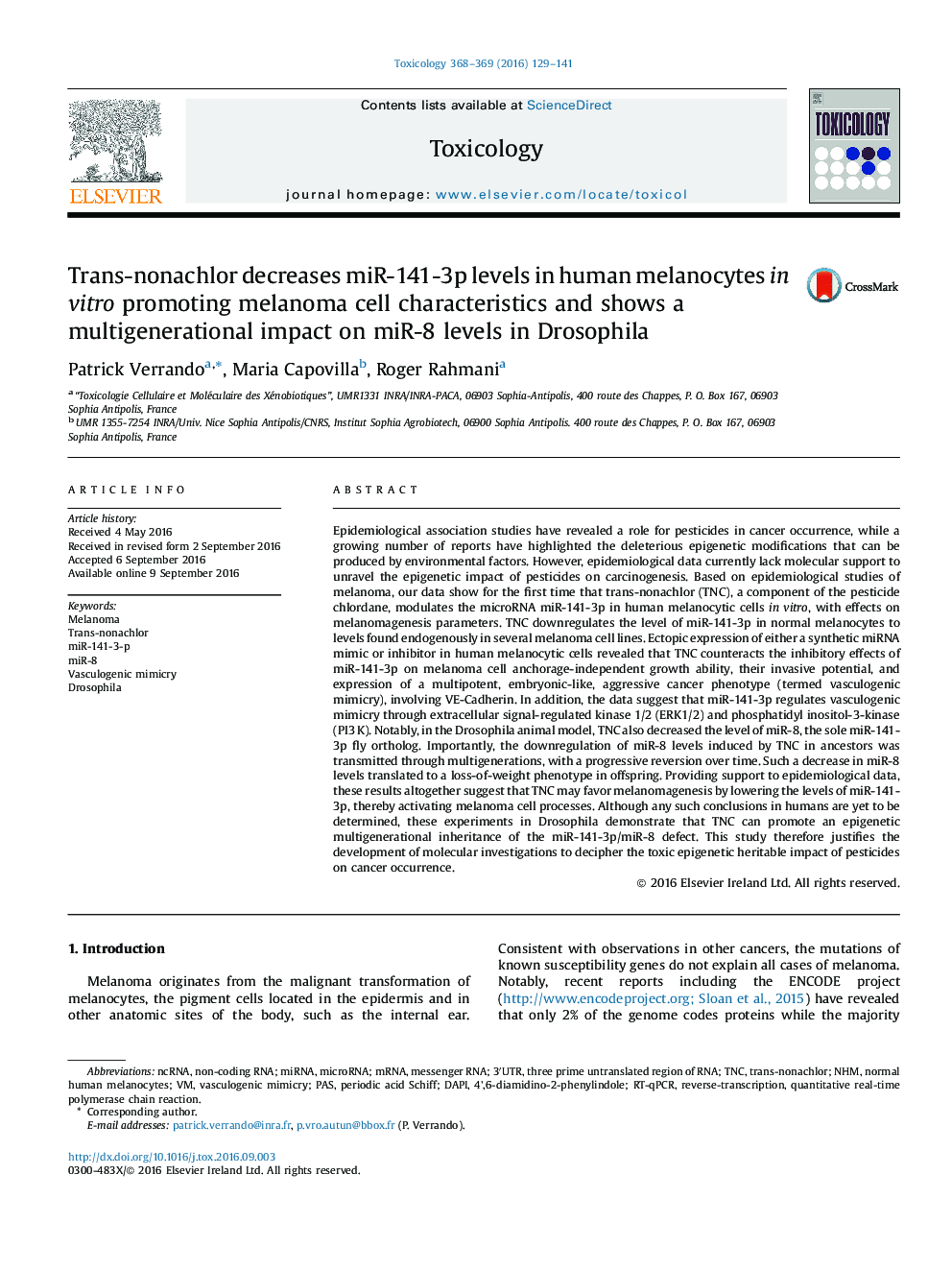| کد مقاله | کد نشریه | سال انتشار | مقاله انگلیسی | نسخه تمام متن |
|---|---|---|---|---|
| 5561976 | 1562303 | 2016 | 13 صفحه PDF | دانلود رایگان |

Epidemiological association studies have revealed a role for pesticides in cancer occurrence, while a growing number of reports have highlighted the deleterious epigenetic modifications that can be produced by environmental factors. However, epidemiological data currently lack molecular support to unravel the epigenetic impact of pesticides on carcinogenesis. Based on epidemiological studies of melanoma, our data show for the first time that trans-nonachlor (TNC), a component of the pesticide chlordane, modulates the microRNA miR-141-3p in human melanocytic cells in vitro, with effects on melanomagenesis parameters. TNC downregulates the level of miR-141-3p in normal melanocytes to levels found endogenously in several melanoma cell lines. Ectopic expression of either a synthetic miRNA mimic or inhibitor in human melanocytic cells revealed that TNC counteracts the inhibitory effects of miR-141-3p on melanoma cell anchorage-independent growth ability, their invasive potential, and expression of a multipotent, embryonic-like, aggressive cancer phenotype (termed vasculogenic mimicry), involving VE-Cadherin. In addition, the data suggest that miR-141-3p regulates vasculogenic mimicry through extracellular signal-regulated kinase 1/2 (ERK1/2) and phosphatidyl inositol-3-kinase (PI3Â K). Notably, in the Drosophila animal model, TNC also decreased the level of miR-8, the sole miR-141-3p fly ortholog. Importantly, the downregulation of miR-8 levels induced by TNC in ancestors was transmitted through multigenerations, with a progressive reversion over time. Such a decrease in miR-8 levels translated to a loss-of-weight phenotype in offspring. Providing support to epidemiological data, these results altogether suggest that TNC may favor melanomagenesis by lowering the levels of miR-141-3p, thereby activating melanoma cell processes. Although any such conclusions in humans are yet to be determined, these experiments in Drosophila demonstrate that TNC can promote an epigenetic multigenerational inheritance of the miR-141-3p/miR-8 defect. This study therefore justifies the development of molecular investigations to decipher the toxic epigenetic heritable impact of pesticides on cancer occurrence.
Journal: Toxicology - Volumes 368â369, 10 August 2016, Pages 129-141